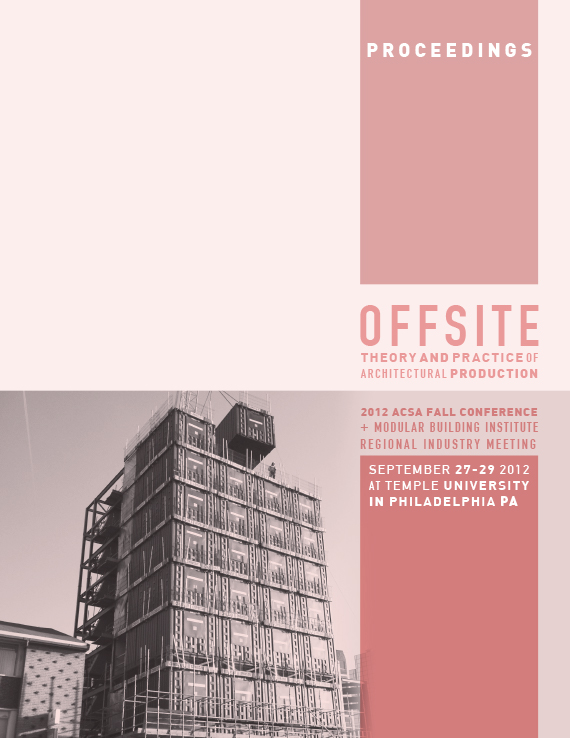Author(s): David Hill
The November 1957 issue of Progressive Architecture (PA) published severalarticles under the theme “Modular Assembly.” By addressing a range ofissues including aesthetics, industrial production, and architectural draftingtechniques, PA contributors illustrated a growing fascination with modular systems,and they established two main factors in the future success of modulardesign and prefabrication: 1) manufacturers’ willingness to produce standardized,dimensionally coordinated building materials, and 2) architects’ use of“Modular Measure” principles in their schemes. Modularity and prefabricationwere gaining momentum among several trade and professional organizationsat the time, and the American Institute of Architects, the Association of GeneralContractors, and the Modular Building Standards Association agreed topromote the “Modular Measure” standard based on a 4” grid. In spite of theseoptimistic developments, PA noted, “total ‘prefabs’ have never fulfilled thequantitative promise that they once made—and, in fact, as one builder hassaid, “the word prefabrication is anathema to the average public.” [p.119]Around this same time, Woman’s Day Magazine (published by A+P Supermarkets)featured a series of mail-order plans for architect-designed vacationcabins. Quaint, easy to build getaways for middle-class suburban families,the cabins offered an ideal building type that would combine simpleon- and off-site construction. Plans were marketed to the “average public,”introducing many readers to modern residential design and—and perhapsless intentionally—modular construction.PA warned that modular schemes risked sterility, but offered Japanese architectureas an example of grid-based modular systems with variety and grace.George Matsumoto, one of the leading proponents of modular standardization,had already begun exploring this idea. Matsumoto was an award-winning Japanese-American architect and professor in North Carolina following World WarII. His design for a modular wood cabin became the first plans that Woman’sDay offered, for less than $5 per set. Matsumoto’s cabin, and others thatwould follow in the series, illustrated a novel approach to do-it-yourself retreatsbecause their panelized components could be prepared off-site and attachedto site-constructed frames. They provide an early example of architects workingwith manufacturers1 and mass media in partnerships that promoted newmaterials and modular design to a burgeoning post-war audience.This paper considers technological and social conditions that popularizedarchitect-designed mail-order plans in the 50s and 60s; it examines vital concernsof practice and challenges that mass production and media posed toprofessional ethics. Standardization and modularity were changing design andconstruction practices, and they were giving architects new opportunities tohave their designs built, perhaps by anonymous purchasers rather than familiarclients. Some architects saw this as an affront to the profession’s dignity,but hindsight reveals how these examples from the mid-twentieth century wereactually quite radical even as they sought mass appeal. They broadened publicconsciousness of modern design and challenged the architect’s professionalconscience. In these projects, the architects explored new possibilities forpractice and modular/prefabricated systems. These designs are the precursorsof today’s wide range of made-to-order house kits, plans, and modules.
Volume Editors
John Quale, Rashida Ng & Ryan E. Smith
ISBN
978-0-935502-85-5

 Study Architecture
Study Architecture  ProPEL
ProPEL 
